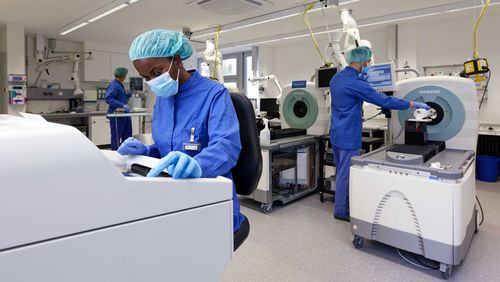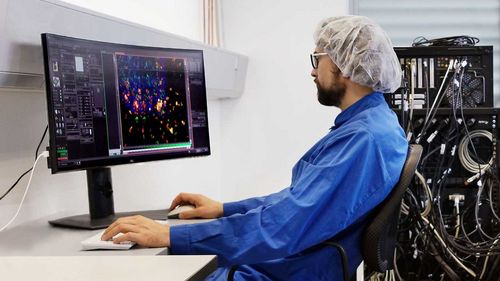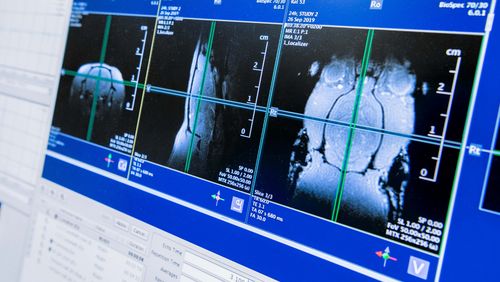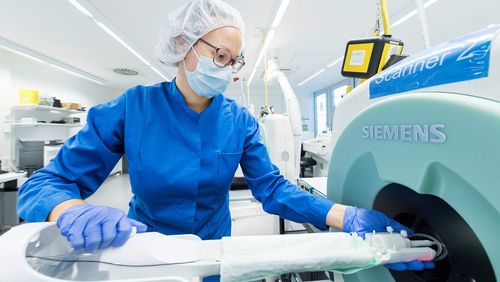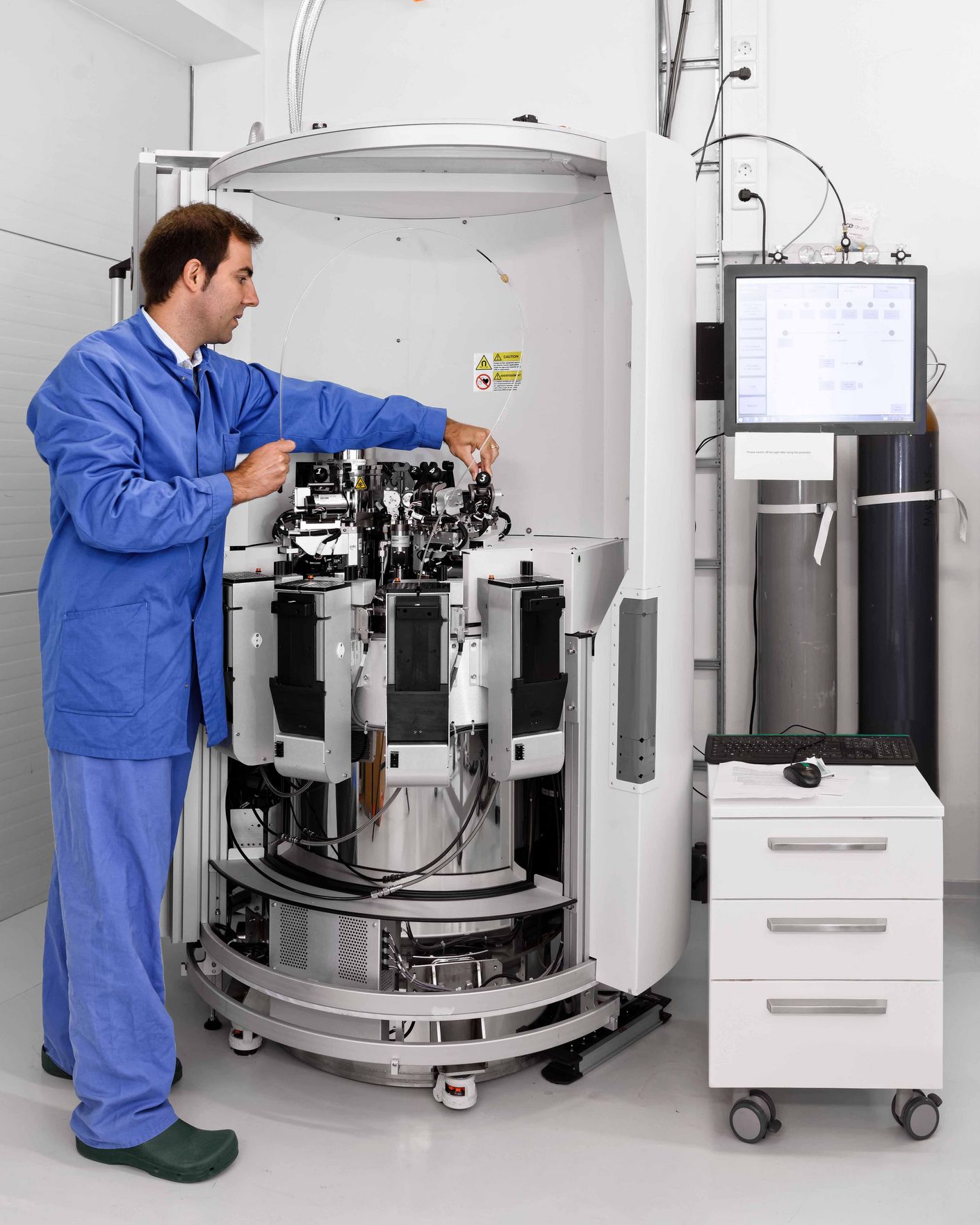
Peering into the human cell
The researchers at the Werner Siemens Imaging Center in Tübingen are making excellent progress: they combine different medical imaging techniques to create new technologies that deliver a nuanced picture of a disease. These innovations mean it will soon be possible to better predict and steer how successful a given therapy will be for a specific individual. A decisive step towards personalised medicine.
Diseases are individual, and factors beyond genetic disposition and lifestyle play a role in whether a person is susceptible to developing an illness. In addition, not all patients respond equally well to the same therapy, nor is the severity of side effects experienced uniform. This holds particularly true for cancer patients. “Every tumour and every patient is different, and each metastasis has its specific traits,” says Bernd Pichler, head of the Werner Siemens Imaging Center (WSIC). Pichler and his WSIC colleagues create detailed images to make visible what these differences consist of and how they can be utilised in choosing a medical treatment. In addition to developing advanced medical imaging diagnostics, the team of roughly 60 researchers at WSIC also explore ways to combine the various imaging techniques. “These new and combined procedures deliver a more comprehensive picture of a disease, and this helps us to better understand how we can treat it,” says Pichler. The team conduct experiments on mice to investigate cancers as well as cardiovascular diseases and inflammation. To translate these findings into clinical care and ensure that patients quickly benefit from the medical advances, the WSIC researchers collaborate with the Tübingen University Hospital.
![[Translate to English:] WSIC-Gruppenleiter André Martins (stehend) diskutiert im Team die Aufnahmen, die die hyperpolarisierte Bildgebung geliefert hat. WSIC group head André Martins and his team discussing.](/fileadmin/_processed_/0/c/csm_02_WSIC_Tuebingen_ee6dfad0a2.jpg)
Insight into metabolic processes
In 2019, Dr André Martins, WSIC group leader, began using a novel method: hyperpolarised imaging, which renders the metabolic processes of cells visible in magnetic resonance imaging (MRI); it is precisely this type of cellular activity that is disrupted in numerous diseases. The most astounding part of the technology? It alters the magnetic state of a metabolic molecule, making it 10 000 times more visible in an MRI. As a result, recognising even low numbers of such molecules becomes much easier, and measurements that previously took nearly four days to complete can be made in ten seconds. This, however, is easier said than done, as preparing molecules for imaging is a complex procedure. In a specially designed instrument, the molecules are first cooled to minus 270 degrees Celsius, then heated to 180 degrees Celsius before being brought back to body temperature. The researchers then have just two minutes to take the MRI measurements before the magnetic effect disappears. André Martins and his team use this elaborate but effective method to observe various processes, for instance, how pyruvate, a metabolic molecule, converts into lactic acid. Initial findings from animal studies indicate that rats with a comparatively high risk of stroke produce more lactic acid in the vulnerable regions of the brain than those with a lower risk; in future, these observations may help to assess an individual’s risk of suffering a stroke. The team use a similar technique to render images that reveal which of the malignant cells in a cancer tumour have a high metabolic rate and are more aggressive. In 2020, André Martins received the prestigious Sofja Kovalevskaja Award, worth 1.65 million euros, for this work.
More effective immunotherapies
The most intense area of work for the WSIC research team is determining the efficacy of immunotherapies, which for the past several years have been regarded as the most promising way to treat cancer. The procedure involves stimulating an individual’s own (endogenous) immune cells, called T cells, to attack tumour cells. Group leader Bettina Weigelin explains the process as follows: “The T cells have a complex task: they have to reach the cancerous organ, penetrate the tissue and assess every single cell.” With some cancers and in some patients, immunotherapy works well—in other cases, only poorly or not at all. “We’re trying to understand why that’s the case and how we can destroy resistant tumour cells.” To realise this goal, Bettina Weigelin began building a unique microscopy infrastructure in 2019; already in operation is the fluorescence microscope for cell cultures that she and her team use to follow the battle between immune cells and tumour cells in real time. Through these studies, the researchers have observed that highly aggressive tumour cells, which infiltrate the tissue to a larger degree, are generally the only cell types that the immune cells effectively attack. Weigelin expects to gain more detailed findings once the new microscopy system—which will take up an entire room at WSIC—is completed at the start of 2021. With this intravital microscopy, researchers can make images of immunotherapies in vitro. The team will also work with infrared lasers that penetrate deep tissue layers and reveal a larger section of a tumour. With the information gained, they can better identify how immune cells reach affected organs and tissues and which parts of a tumour they most effectively combat.
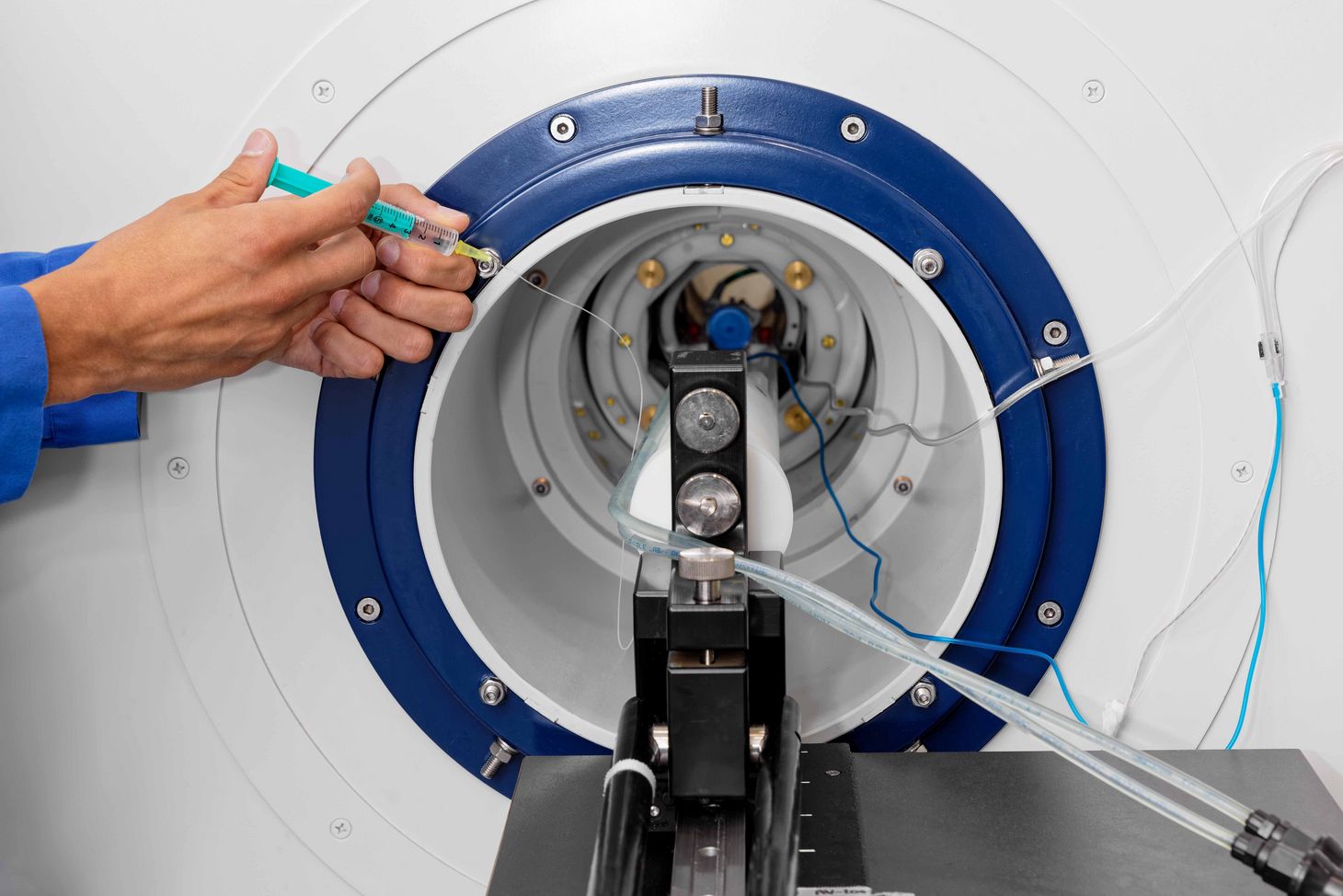
A revealing combination
The two methods described above—hyperpolarised imaging and fluorescence microscopy—deliver even more information when they are combined. The fluorescence microscope provides information on the processes in different tissues—skin, muscles, blood vessels—and on how individual cells react to a therapy. The hyperpolarised imaging contributes to better understanding anatomical aspects and molecular metabolic processes within an entire organism. “In a way, it works like Google Maps,” says André Martins. “Using both techniques allows us to see the processes from different perspectives and on different scales.”
Personalised cancer therapies
In the past, the WSIC researchers had already combined positron emission tomography (PET) with magnetic resonance imaging (MRI) and gained valuable evidence for improving medical treatment. Their overarching goal is to predict which therapy will be most effective in an individual patient. Recently, the team applied their findings in a clinical study to chart the precise characteristics of breast cancer—with success. A therapy for colorectal cancer is also being researched, Bernd Pichler says, adding that “this work, too, is looking very promising”.
Text: Santina Russo
Photos: Oliver Lang
